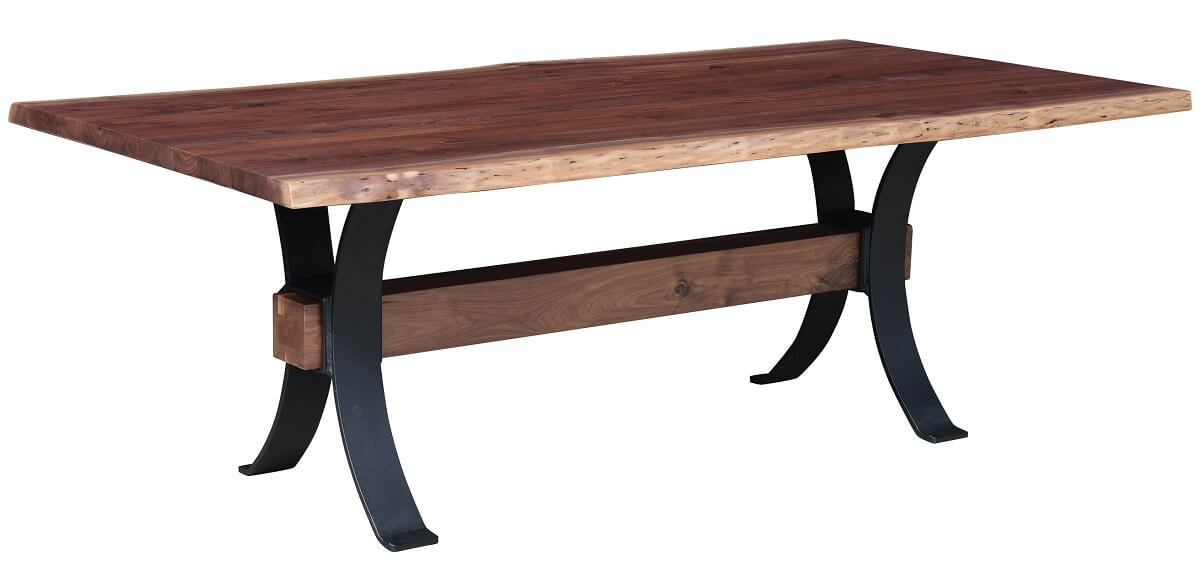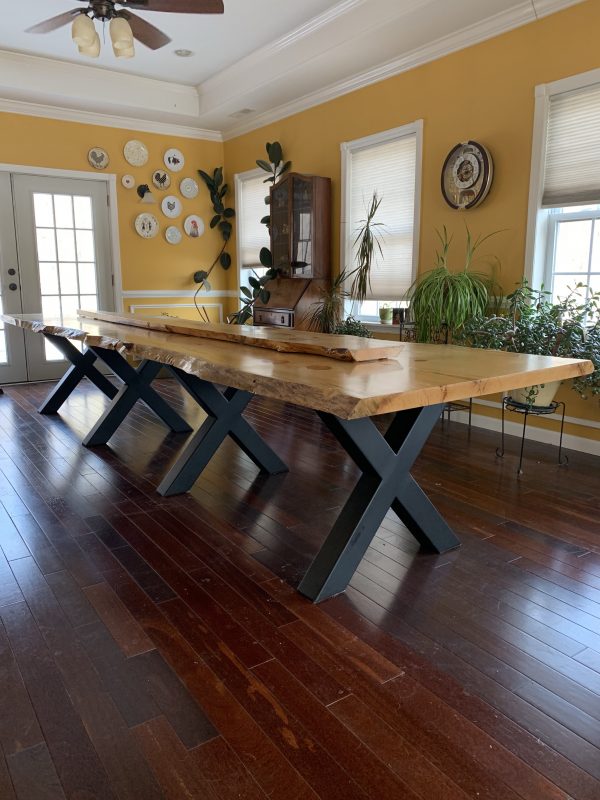Enhance Your Dining Room with Unique and Modern Dining Room Table Legs
From Standard to Modern: Find the Perfect Dining-room Table Legs for Your Design
While classic layouts such as cabriole and turned legs evoke a sense of ageless elegance, modern styles like hairpin and geometric alternatives provide a possibility for striking visual interest. As you think about these elements, the inquiry stays: exactly how can you flawlessly integrate these diverse leg designs to create an unified eating experience?
Comprehending Table Leg Styles
The selection of dining-room table leg designs can significantly influence both the looks and capability of the area. Each leg design adds one-of-a-kind visual elements and functional functions, satisfying diverse design preferences and use demands. Comprehending these designs is essential for picking the appropriate eating table that aligns with your general interior layout vision.
For circumstances, conical legs provide a clean, classic look that can improve an area's elegance, while pedestal bases give stability and optimize legroom, making them excellent for smaller sized spaces. Barrette legs, a trademark of mid-century modern-day layout, introduce a commercial panache, enabling for a ventilated, open feeling. In a similar way, trestle legs stimulate rustic charm, offering durable assistance and a feeling of eternity.
Wooden legs can bring warmth and appearance, whereas steel choices often share a smooth, contemporary ambiance. Eventually, recognizing table leg designs is crucial for developing a cohesive dining area that shows personal style while making sure functionality and convenience.
Standard Table Leg Options
When selecting eating space table legs, conventional choices frequently embody timeless beauty and craftsmanship. These designs mirror a rich heritage and a dedication to quality, making them ideal for those that appreciate timeless aesthetics.
Among the most iconic standard leg designs is the cabriole leg, defined by its stylish curved shape. This design frequently includes attractive makings and is most typically located in Queen Anne and Chippendale furniture. An additional preferred choice is the transformed leg, which flaunts a collection of smooth, rounded forms that provide a classic look while maintaining stability.
Additionally, the straight leg, while simple, uses a unadorned and sturdy framework that can mix effortlessly with a selection of tabletop styles. For those attracted to ornate describing, claw-and-ball feet legs stimulate a sense of majesty and can function as a stunning centerpiece in any kind of dining area.
Finally, stand bases, although not strictly legs, give an alternate typical choice that enables for sufficient legroom and can be beautifully sculpted. Each of these standard leg designs contributes to the overall ambiance of an eating area, marrying function with aesthetic charm.

Modern Table Leg Layouts
Modern table leg designs offer a varied range of styles that stress ingenious products and tidy lines. These designs typically focus on functionality while working as striking focal points within a dining room. Minimal visual appeals prevail, with legs crafted from materials such as metal, glass, and engineered wood, which contribute to a contemporary and ventilated feel.
One popular layout is the hairpin leg, defined by its slim, conical framework that gives stability without overwhelming the tabletop (dining room table legs). This design is usually found in mid-century modern furnishings and can easily match different dining table forms. An additional fad is making use of geometric shapes, where legs might handle unbalanced or angular kinds, adding aesthetic passion and a touch of creativity

Blending Styles for Distinct Areas
Usually, homeowners look for to create one-of-a-kind eating rooms that reflect their individual design by blending various style elements. This strategy permits the incorporation of varied aesthetic appeals, leading to a harmonious yet unique setting. Combining a rustic wooden table with sleek, modern steel legs can create an attractive comparison that elevates the space's overall appeal.
In addition, incorporating vintage table legs with contemporary tabletops can stimulate a sense of background while keeping a modern sensibility. Such combinations not just display individual taste but additionally motivate imagination, enabling house owners to curate an navigate to this website area that really feels both personal and welcoming.
Color plays a crucial function in this blending procedure; choosing table legs that match or contrast with the existing shade system can boost aesthetic rate of interest. Whitewashed legs can soften the daring of a dark table surface area, developing a well balanced aesthetic.
Tips for Picking the Right Legs
Choosing the right table legs is crucial for achieving both capability and aesthetic charm in your eating space. Begin by taking into consideration the total design of your space. Standard settings gain from legs that feature elaborate makings or transformed designs, while modern rooms may require streamlined, minimal designs.
Following, evaluate the elevation and stability of the legs. dining room table legs. Basic eating tables company website range between 28 to 30 inches in height, so ensure the legs match this measurement for comfort. click here for more info Additionally, robust products, such as wood or steel, can boost stability and durability
Review the leg shape too-- options include directly, tapered, or pedestal layouts. Straight legs use a traditional appearance, while conical legs can include a touch of style. Pedestal bases provide adequate legroom and are perfect for smaller areas.
Conclusion
In summary, picking the excellent dining-room table legs needs cautious factor to consider of both modern and typical styles. Typical alternatives such as cabriole and turned legs offer ageless style, while modern-day designs like barrette and geometric shapes give a contemporary touch. By harmonizing leg design, height, and material with the total decor, a natural and inviting atmosphere can be accomplished. Eventually, the chosen table legs ought to show the wanted aesthetic, boosting the eating experience within the space.
The range of dining room table leg designs can considerably affect both the visual appeals and performance of the room. Eventually, comprehending table leg designs is important for developing a natural eating area that mirrors individual design while making certain practicality and convenience.One of the most iconic typical leg styles is the cabriole leg, defined by its stylish rounded shape. Straight legs offer a classic look, while tapered legs can include a touch of beauty.In recap, selecting the perfect dining space table legs needs cautious consideration of both traditional and contemporary styles.